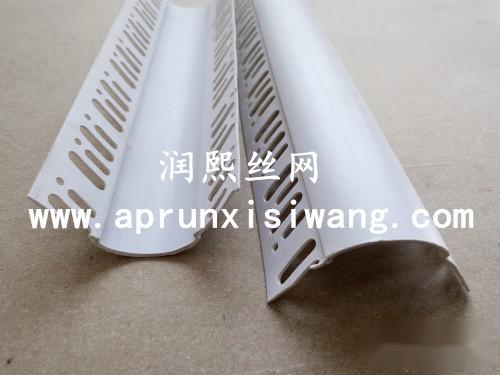Large Radius Corner Guard Strip Implementation
First, apply a layer of plaster on the base layer, and then snap the line, so that the line is clearer. Use a trowel to clean the internal and external corners and surrounding protrusions. If not cleaned properly, the line will encounter obstacles and will not snap correctly.
2, Snapping Lines for Internal and External Corners. At each vertical internal and external corner, use a plumb bob to drop a vertical line for snapping, and based on the vertical line of the corner, place a parallel line 500mm to each side of the corner. This line is defined as the “Standard Line for Corners”.
Before applying putty to the wall, use plaster to level the area within 500mm on both sides of the internal and external corners, leveling until the error detected with a 2 meter straightedge in the vertical direction does not exceed 2mm as the standard. Beyond 500mm from the corners, use plaster or putty to ensure a smooth finish.3, Applying Putty Use putty to straighten the corners along the ink line, and after drying, apply a full layer of plaster. One person should hold one end of a 2 meterL-shaped aluminum alloy straightedge, pushing parallel from one side of the internal corner towards the corner, gently moving back and forth upon reaching the corner, then scrape parallelly; this treatment will prevent small bends in the internal corner. After drying, check whether the internal and external corners meet standards, and check the flatness of the wall surface at the corners based on the vertical line. If the error is within 5mm use wall lining to level; if the error exceeds 5mm it must be leveled with plaster.
4, External Corner Protection Against Collisions
Large Radius Corner Guard Strip Manufacturer
External corners are protruding and are more likely to be struck, causing damage to the wall and even injury to people or furniture. To avoid this situation, protective measures can be taken for external corners. Options include smoothing the external corners by sanding them into small arcs; or installing corner guard strips for protection.2. Wall Treatment Methods for Internal and External Corners The main decorative materials for walls are paint, wallpaper, and tiles. During construction, issues with wall internal and external corners will arise. The following describes the methods for handling wall internal and external corners.













